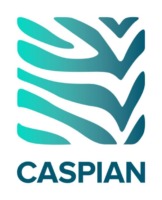While this current bear market has dissuaded a good portion of investors and blockchain supporters from staying the course, it’s important to remember that there is still plenty of value to be extracted in this industry. If you truly believe in something, that belief should extend to all ends of the spectrum — whether it be a sub-$3k Bitcoin or a $100,000+ Bitcoin — and should not be eroded by fickle bandwagon investors who entered for a quick profit.
The present market is set to weed out a healthy percentage of altcoins and blockchain projects which shouldn’t have entered the market in the first place (and likely some that deserve praise as well). This may nullify your initial investment, but it’s also the perfect time to acquaint yourself with the crypto industry beyond everyday market fluctuations, read up on some smaller cap projects, and take some calculated risks.
It bears repeating, you shouldn’t be investing more money than you are comfortable with losing… however, a calculated gamble does stand to pay off should the market ultimately correct and grow.
Take this article as your introduction to several small market cap projects (one of them isn’t even trading on any exchanges yet) which are in it for the long haul, taking the time to refine core product and tech, and build organically.
Now, let’s get into the 3 small market capitalization cryptocurrencies to watch in 2019.
Disclaimer: It’s important to remember that this article should NOT be taken as investment advice, and the following 3 cryptocurrencies are not ranked in any particular order.
1. Luxcore ($LUX) — $3 Million Market Cap

Luxcore Project Breakdown
Deriving its name from the Latin word Lux, meaning “light,” Luxcore is in the midst of constructing a blockchain solutions and services ecosystem geared towards enterprise security and privacy products.
Relying on the ground-breaking, ASIC-resistant algorithm PHI1612 to further its core product and offerings, Luxcore’s industry-agnostic, highly customizable, and all-in-one enterprise ecosystem is easing the overall integration of blockchain-ready, blue-blood infrastructure for businesses. Specifically, Luxcore boasts:
- Privacy and Security: Implementation of a superior private network approach to security through LuxGate and Parallel Masternodes (PMN), 2 security layers at the heart of functional and data transactions, coupled with classic blockchain coin cloaking and mixing for heightened privacy.
- Scalable Ecosystem: Unlimited permissioned blockchains and private networks, integrated through LuxGate and PMNs, with each capable of running/embedding a specific functionality or application.
- Cherry-Picked Solutions and Enterprise-Ready Architecture: Championed key features of major blockchains in existence (e.g. smart contracts, SegWit, masternodes, anonymous transactions) for enterprise and institutional use, along with authorization of customizable applications and deployment of DApps (e.g. deployed on location or through the cloud).
And instead of following the customizable blockchain solution herd, which takes a rather divisive stance via an “us versus big business/government” disposition, Luxcore is accounting for all essential actors and entities for ultimate mass enterprise adoption — opting to focus not only on one core subset, but on businesses, users, and government.
A Luxcore feature worth noting is LuxGate, a blockchain-interoperability protocol connecting splintered and isolated blockchain networks and ecosystems, which has been hailed as “nothing short of a technological marvel in the blockchain space.”
As Luxcore is a system-agnostic operability mechanism, businesses, institutions, and governments will not only be able to pick and choose features and technology from otherwise inaccessible blockchains, but will be able to combine various algorithmic layers to strengthen and further their functionality and security.
Why You Should Keep an Eye on LUX
In Q2 2018, Luxcore rolled out Mercury v.5.1.0 (as a result of a hard fork), the biggest and most ambitious Lux update in their history, not only implementing SegWit (a size-relieving malleability and security feature where transaction data is sliced into 2 segments), but also smart contracts, hybrid masternodes, and block pruning.
Since then, the team has been hard at work, announcing plans for a decentralized file storage system on the PMN in mid-November — up until recently, the purpose and functionality of the PMN had not been divulged. Note that the parameters of the decentralized file storage system will be finalized in Q1 2019.
Furthermore, Luxcore team members John McAfee (CEO), John Kim, and Cosmin Tudor are set to be featured on InnovateTV, which will subsequently be aired on the History Channel on December 12 at 6:30 EST. Luxcore’s feature in the spotlight will be a first for the project and a step in the right direction towards disseminating its message and core features to a national audience — it’s a no-brainer that one of the biggest hurdles facing mainstream adoption is lack of effective communication with the average person.
They’ve also joined Blockfolio Signal, in order to provide information concerning LUX updates and developments as soon as they happen, furthering their communication channels and reach even more.
Finally, if you’re looking for a one-of-a-kind staking wallet, look no further. Luxcore boasts the first and only PoS-enabled web wallet for LUX holders, meaning users no longer have to have their computer up and running in order to generate staking rewards.
At present, there’s no single web wallet in the blockchain ecosystem that combines all essential functional and protective elements into one wallet (easy-to-understand interface, staking, and high-grade security).
At the time of writing, Lux is listed on CoinMarketCap at US$0.96 or 23,950 Satoshis.
If you’d like to read up further on Luxcore and how it’s easing the adoption of blockchain technology for enterprise, institutions, and government, head on over to their website and check out their whitepaper.
And, if you’re looking for a more in-depth look at reasons to keep an eye on Luxcore, we recommend checking out this past article.
2. Caspian ($CSP) — Not Currently Trading

Caspian Project Breakdown
The brainchild and joint venture between Tora Trading Services Limited — a leading global cloud-based technology provider — and Kenetic Trading Systems Limited — a leading blockchain and crypto investment firm — Caspian is striving to institutionalize crypto asset management by way of a full-stack cryptocurrency trading and risk management platform.
Thanks to Caspian, digital asset investors will be equipped with an inclusive Risk Management System (RMS), Position Management System (PMS), and Order and Execution Management System (OEMS) at their fingertips.
Caspian will also provide interoperability and sophisticated connectivity to the digital asset exchange ecosystem.
At its core, Caspian can be organized into 3 overarching categories, all set to meet the needs and inadequacies of our present-day cryptocurrency trading space:
- Execution: Provides OEMS for access to major digital exchanges for traders and portfolio managers, a Smart Order Router (SOR) for the visualization of single pool liquidity across exchanges, customizable user-built strategies for traders to define order management (via rule-based language), and a configurable alerts mechanism for users seeking to define conditions under which specific alerts are triggered.
- Position and Risk Management: Provides PMS and RMS for users to monitor their positions, exposures, and P&Ls, recordkeeping functions to perform reconciliations, and an allocation engine for users to achieve the best execution of an order (e.g. ability to define order on a per-share, per-NAV, or percentage basis).
- Compliance and Reporting: Provides a low latency (with extensive functionality) compliance engine for users seeking to define limits and rules for both pre-trade and post-trade workflows, reporting engine for trade files, position data, audit reports, snapshot reports, and compliance reports, and an online dashboard for graphing, order status, and margin reports (to name a few).
Furthermore, Caspian sanctions users to analyze all of their trades in a single place, regardless of the original exchange where the transaction took place on — ultimately driving exchange liquidity and volume across the sector.
Simply put, Caspian is a complete asset management solution, covering the entire lifecycle of a trade, all the while enabling investors to seamlessly navigate fragmented exchange ecosystems.
Why You Should Keep an Eye on CSP
While Caspian is not yet trading on an exchange, it’s gearing up for a gargantuan 2019 in terms of technology and development.
They ended Q3 2018 with a bang, partnering with Coinbase — one of the largest digital currency exchanges in the world. Under the Coinbase-Caspian partnership, Coinbase Pro is set to integrate Caspian’s “full stack” to boost trading and portfolio management capacity and hopefully “move forward the institutional adoption of crypto as a mature, tradable asset class.”
And, should the digital asset exchange space reclaim anywhere close to its original daily trading volume (in April 2018, there were over 5 out of 200 exchanges supporting USD $1 billion+ in daily trading volume), Caspian stands to benefit nicely, solidifying itself as the “glue” connecting 50+ go-to trading platforms for users looking for liquidity, volume, and dynamism.
At time of writing, Caspian connects to 10 of the biggest cryptocurrency trading exchanges, including BitMex, Binance, Poloniex, Bitfinex, Gemini (FIX), GDAX (FIX), and BitFlyer.
Caspian hasn’t wasted any time since reaching their hard cap of US$19.5 million through a private and public token sale, revealing they have around 170 customers waiting to be onboarded to the platform.
Currently, Caspian is working/has worked with 15 clients in the onboarding process, including the likes of Lykke, ID Theory, and Ikigai Asset Management. Additionally, they already have 15 global crypto institutions live and trading on their comprehensive platform, including Galaxy Digital, Blockstars, and Techemy.
Finally, with Fidelity having announced the launch of their custodial solution, enabling investors to outsource the storage of their digital assets to a trusted third-party, they are in need of an asset management platform (like Caspian) to assist in opening the floodgates for institutional money to come rushing into the blockchain market.
As noted above, Caspian is not currently trading on any exchanges, however, that was inevitable this past year.
To read up further on Caspian and be notified about future exchange listings, we recommend checking out their website and working your way through their whitepaper, or heading on over to their blog for the latest updates and news.
3. Fantom ($FTM) — $8 Million Market Cap

Fantom Project Breakdown
Tackling a tale and issue as old as time in blockchain — scalability — South Korea-based Fantom is the world’s first Directed Acyclic Graph (DAG) based smart contract platform.
First, you’re probably wondering what a DAG is? In the wild world of blockchain, DAGs are the “new kid on the block,” combining concepts of various blockchains such as Proof-of-Work (PoW) and Proof-of-Stake (PoS), and the longest chain rule. Do however note that Fantom’s DAG does not implement PoW, and instead achieves consensus via a gossip based protocol.
You can think of DAGs as a collection of nodes which ultimately represent a specific “thing,” and are connected by directed edges rather than by a “loop” or cycles.”
Simply put, DAGs are one-way streets that can never be returned to, ultimately allowing for higher throughput and scalability on a decentralized network.
Specifically, Fantom is aiming to become the first platform to disrupt today’s existing blockchain infrastructure for payments and supply chain management, and it boasts the following features:
- Theoretic Infinite Scalability: As more nodes join and participate in Fantom’s network, its processing power and capabilities increase.
- Instantaneous Payments: Unlike the blockchains of Cardano and EOS, transactions on Fantom are executed asynchronously and with instantaneous confirmation.
- Near Zero Cost Transaction Fees: For transfers from one wallet to another, transaction fees are less than USD $.01.
Furthermore, Fantom has developed their own consensus algorithm, known as the “Lachesis Protocol,” which enables the platform to accomplish finality time faster and more efficiently than other blockchains utilizing DAGs (with an estimated 300,000 tps).
Finally, Fantom enables the building and deployment of dapps on their “Opera Chain,” furthering transparency and cost reductions for countless industries (e.g. telecommunications, retailers, logistics, financial services, government, and more).
Why You Should Keep an Eye on FTM
Having garnered recognition for their technical whitepaper by Cornell’s arXiv and ironed out their fundamental product, Fantom’s now turning towards securing partnerships and spreading the DAG gospel.
Specifically, in November 2018, Fantom entered into a partnership with the University of Sydney to research programming methodology for smart contracts, extend programming language Solidity until it’s safe to use, and produce a compiler to translate Solidity to a virtual machine.
Such partnership follows Fantom’s recent permeation of Australia, and is just the beginning of a tenure which is set to work with local communities, enterprises, businesses, and government to define, build, and deploy Fantom technology in Australia.
And, it’s not just Australia Fantom is tackling. In late November, Fantom announced a partnership with Fuiou Group, a China-based third-party payment provider and solutions company, with the goal of incorporating Fantom’s infinitely scalable payment technology in their payment service.
Just for record, Fuiou Group’s payment service handles over 6 million transactions per month and is used by consumers across the globe.
Finally, showing the diversity of Fantom’s scalable technology is their October partnership with multi-billion dollar corporation and energy industry titan Danfoss. The terms of the partnership dictate a “massive strategic alliance,” with the overall endgame to revolutionize P2P energy platforms (similar to how Uber has taken on modern-day transport).
To understand the magnitude of this partnership, Danfoss employs nearly 24,000 people across the globe, and has netted €5.8 billion in sales across 47 countries and 56 factories in 2017.
You can read up further on Fantom by swinging by their website and checking out their whitepaper. And, to keep up with the latest Fantom news and updates, check out their detailed syllabus here.
Final Thoughts
When researching and investing in cryptocurrencies, all you can do is make the best decision you can with the information available to you at the time. Think of this as an opportunity to familiarize yourself with projects at near ground floor, and lay the foundation for a future (hopefully) bull run.
So, whether you’re looking for projects making moves and solidifying themselves at the forefront of enterprise, government, and institutional blockchain adoption, look no further.
Finally, we can’t stress enough that it’s essential for you to do your own research, never invest more than you’re prepared to lose, and utilize cold storage when you’ve accrued more than one month’s salary in holdings.
We’d like to hear your favorite cryptocurrency of the above 3, or any of your favorite small market cap altcoins to keep an eye on this 2019. Let us know in the comments!

